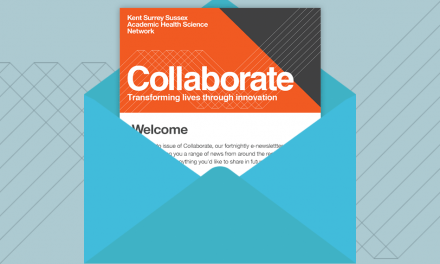Jo Congleton is a consultant in respiratory medicine at University Hospitals Sussex NHS Foundation Trust, and clinical lead for Kent Surrey Sussex AHSN’s respiratory programme. In this blog for World Asthma Day 2021, she looks at how Patient Safety Collaboratives and AHSNs are working to improve asthma care.
In the UK alone, it is estimated that 5.4 million people of all ages are receiving treatment for asthma. With modern treatment, it should be possible to control asthma for the majority of people. However, there are still over 75,000 unplanned asthma hospital admissions each year.
The 2014 national review of asthma deaths (NRAD) highlighted failings in care, in particular the lack of review in primary care, and undertreatment: there was underuse of preventer medication and overuse of reliever medication.
Asthma UK carries out an annual asthma survey; the 2019 report flagged up that, in contrast to previous years, there had been no improvement in important measures of good care. Over 60% of people with asthma were not receiving basic good care in the form of an annual, good quality primary care asthma review.
This is surely a call to action. The National Asthma and COPD Audit Programme (NACAP) links audit to quality improvement, and has workstreams in both primary and secondary care in England and Wales. NACAP’s clinical audit report for 2019/20 contains data from nearly 20,000 asthma admissions over a 12 month period and reports performance in several quality measures. It also allows us track progress on four important interventions expected to occur in the first hour of care: peak flow assessment, administration of beta-2 agonists, administration of systemic corticosteroids, and the assessment and prescription of oxygen.
Although an asthma admission may indicate failure in care, it is an important opportunity to review and improve future care prior to discharge. Six elements of good practice care form the asthma discharge care bundle and nationally, Patient Safety Collaboratives (PSCs) are working to improve uptake of the bundle as part of the ‘Adoption and Spread’ national patient safety improvement programme.
Kent Surrey Sussex PSC is pleased to be the lead for this programme. The aim is to improve on the NACAP reported figure of 37.5% of patients admitted with an exacerbation of asthma, who received all six elements of the care bundle.
In common with other conditions, health outcomes in asthma are less good in disadvantaged groups. Asthma is more prevalent in the most deprived communities, and those living in deprived areas are more likely to have an emergency hospital attendance with asthma.
For those involved in healthcare, we may not be able to directly alter what Michael Marmot describes as ‘the causes of the causes’ – the conditions in which people are born, grow, live, work and age, (also known as the social determinants of health). But we can aim to redress the inequality by the way in which we practise and by considering the impact of any intervention, ensuring that an intervention does not widen any health gap.
It is estimated that only around 20% of asthmatics who would be eligible for biologic treatment, based on disease severity, currently access this care. The AHSN Network is supporting bids to access funding available through the Rapid Uptake Programme (RUP) around improving access to biologics for asthma patients. It will be important that any intervention is carried out in such a way as to give equity of access, regardless of social situation.
A few weeks ago I marked Earth Day and reflected on the relation between health, healthcare and climate change. Using active transport, such as walking or cycling rather than using a car or bus, is both beneficial to the individual and the environment; there is a direct relation between levels of air pollution and asthma exacerbations.
There is also concern around the impact of the coronavirus pandemic on activity levels for some. Keeping active is an important aspect of wellbeing for respiratory patients, in part by reducing deconditioning.
Another climate-related aspect of asthma care is considering the Global Warming Potential (GWP) of inhaled therapy. The respiratory community previously made the switch away from CFC-containing inhalers and now there is an opportunity to involve our patients in considering the environmental impact of therapy by including GWP when discussing inhaler choice with our patients. Here’s hoping that future asthma care is better, fairer and greener.
Jo Congleton, Consultant in Respiratory Medicine, University Hospitals Sussex NHS Foundation Trust.
May 2021





